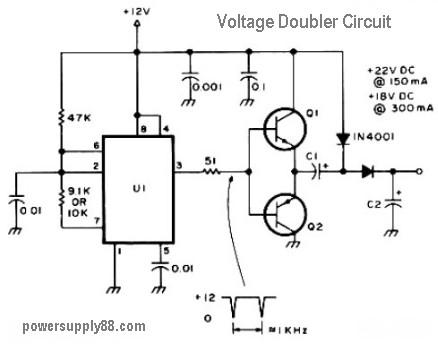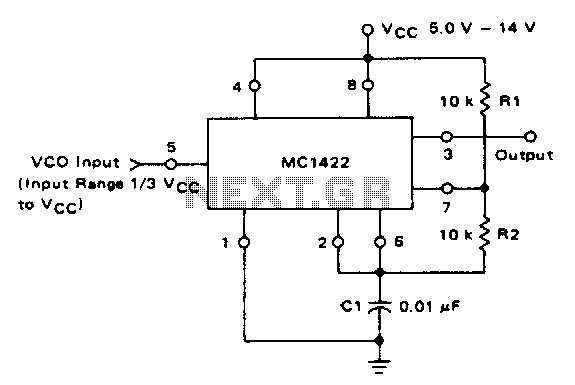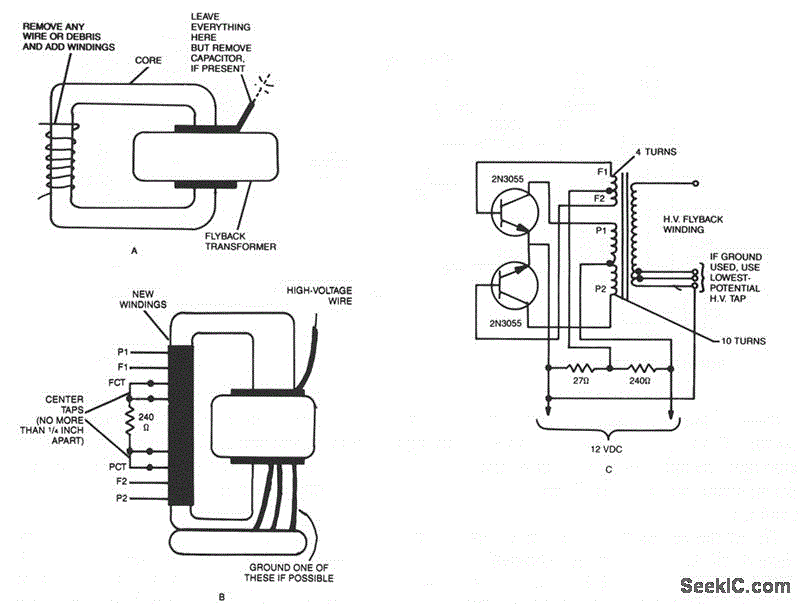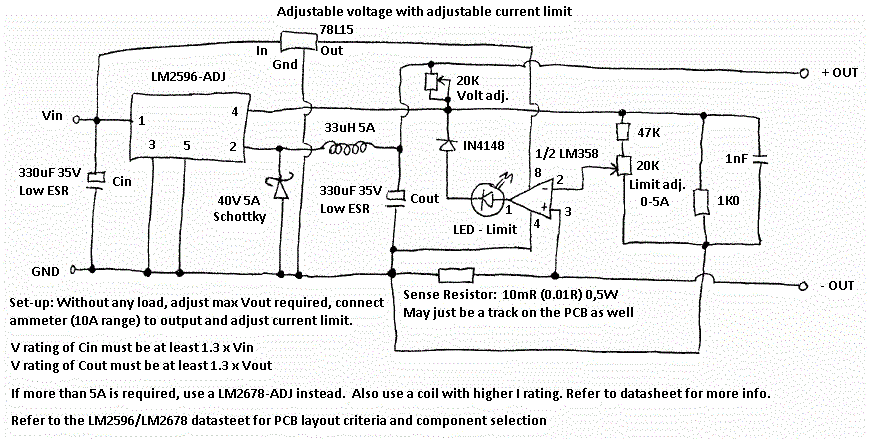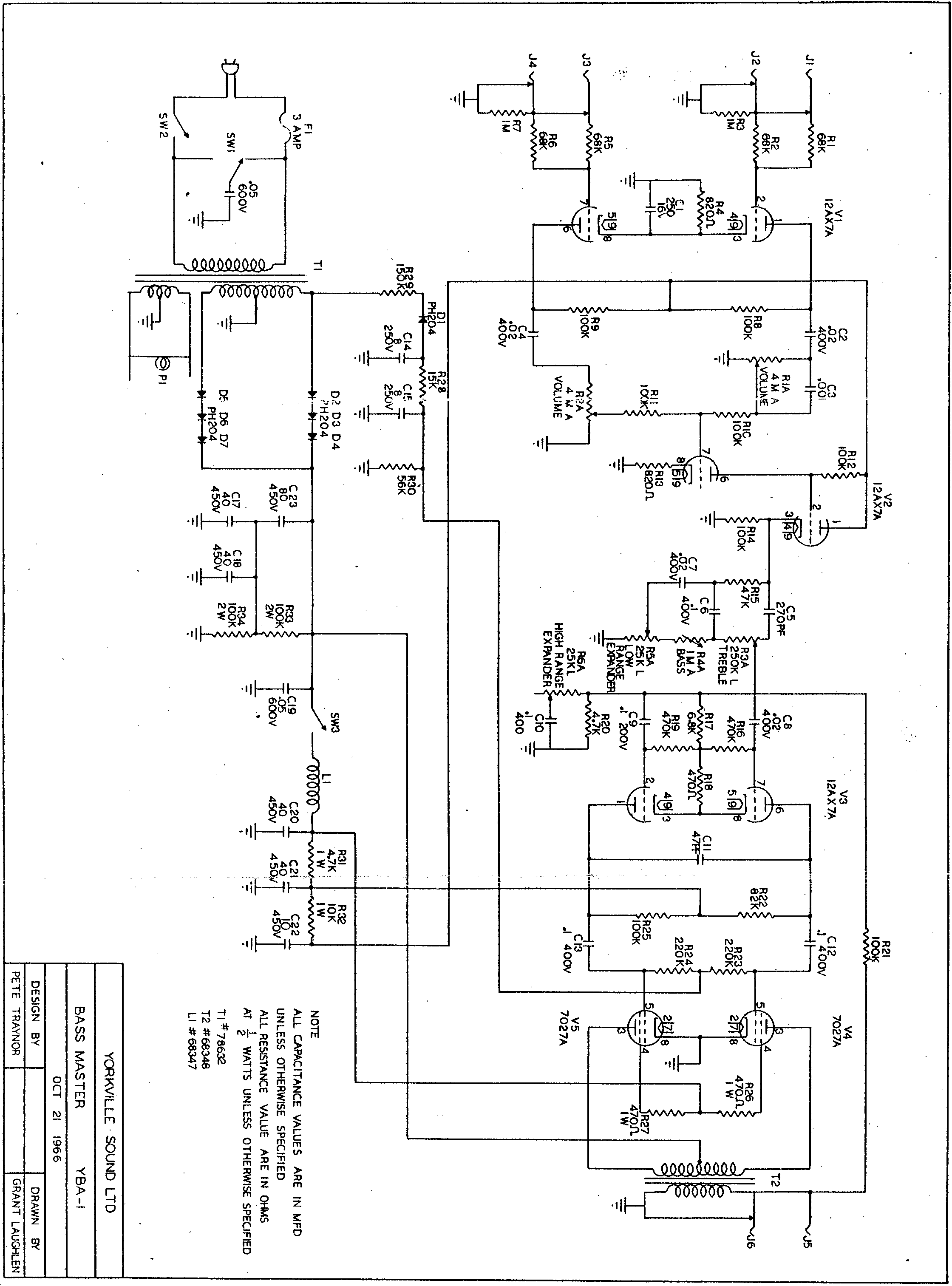
Solar Cell Voltage Regulator
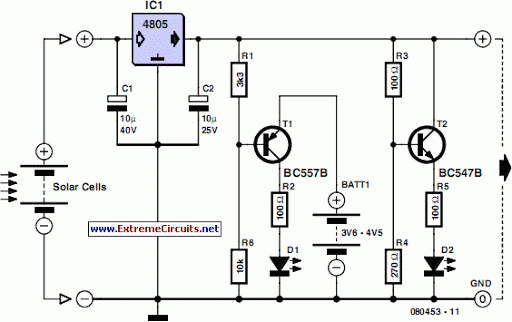
This device is designed to serve as a simple and cost-effective comparator, intended for use in a solar cell power supply system where a quick indication of either too low or acceptable voltage is required. The circuit includes one 5V regulator, two transistors, two LEDs, five resistors, two capacitors, and one small battery. Although a 4V battery is indicated, alternatives such as 4.5V (three alkaline batteries in series) or 3.6V (three NiCd cells in series) can also be utilized. The specifications of the voltage regulator IC1 are primarily influenced by the size and number of solar cells, as well as the current draw of the connected equipment. The low-drop 4805 voltage regulator is recommended, although other regulators may also function effectively, provided that the output voltage of the solar cells is monitored. The transistors T1 and T2 are complementary types, consisting of one pnp and one npn transistor. While the circuit specifies the BC557B (pnp) and BC547B (npn) transistors, any small-signal equivalents may suffice. The values of the voltage dividers R1/R6 and R3/R4 may require adjustment based on the transistor type and gain, or according to the desired voltage thresholds. With the resistor values indicated in the schematic, LED D2 illuminates fully when the voltage exceeds approximately 5 volts, while LED D1 activates when the voltage falls below around 4.2 volts. Between these two thresholds, both LEDs may glow dimly, indicating an intermediate voltage range. A buzzer or other alert device can be connected across the terminals of LED D1 to provide a more pronounced warning if the voltage drops below acceptable levels. The circuit's current consumption is approximately 20 mA at 5V, decreasing with the voltage supplied by the solar cells.
This comparator circuit is particularly beneficial in applications involving solar power systems, where monitoring voltage levels is crucial for maintaining efficient operation. The use of a low-drop voltage regulator, such as the 4805, ensures that the circuit can operate effectively even with lower input voltages, which is common in solar applications due to varying sunlight conditions. The choice of complementary transistors allows for a responsive and reliable switching mechanism, capable of toggling the LEDs based on the voltage thresholds set by the resistors in the voltage divider networks.
The circuit's design is modular, allowing for adjustments to be made based on the specific characteristics of the solar cells used and the load requirements. The voltage divider resistors can be selected or modified to tailor the activation points of the LEDs to the desired voltage levels, ensuring that the indicators provide accurate feedback on the system's performance. The addition of a buzzer enhances the functionality of the circuit, providing an auditory alert that complements the visual indicators, thus improving the overall user experience.
In summary, this simple comparator circuit is an effective solution for monitoring solar cell power supplies, providing clear visual and auditory indications of voltage levels to prevent under-voltage conditions and ensure reliable operation of connected devices. The design's flexibility and low power consumption make it suitable for various applications in renewable energy systems.This device is designed to be a simple, inexpensive comparator`, intended for use in a solar cell power supply setup where a quick too low` or just right` voltage indicator is needed. The circuit consists only of one 5V regulator, two transistors, two LEDs, five resistors, two capacitors, and one small battery.
Although a 4-V battery is indicated, 4. 5 V (3 alkalines in series) or 3. 6 V (3 NiCd cells in series) will also work. The specifications of voltage regulator IC1 are mainly determined by the size and number of the solar cells and the current pull of the equipment connected to the output. Here the low-drop 4805 is suggested but other regulators may work equally well as long as you observe the output voltage of the solar cells.
Transistors T1 and T2 are complementary types i. e. one each of the pnp and npn variety. Although the ubiquitous BC557B (pnp) and BC547B (npn) are indicated, any small-signal equivalents out of the junk box will probably do. The values of voltage dividers R1/R6 and R3/R4 may need to be adjusted according to the type of transistor and its gain, or according to the desired voltage thresholds.
Using the resistor values shown in the schematic, LED D2 turns on fully when the voltage is just above 5 volts. LED D1 turns on when the voltage drops below 4. 2 volts or so. Between those two thresholds, there is a sort of no man`s land where both LEDs are on dimly. A buzzer or other warning device could be connected across the terminals of LED D1 to give a more substantial warning if the voltage drops below operating limits.
The current consumption of the circuit is about 20 mA at 5 V, and it decreases with the voltage supplied by the solar cells. 🔗 External reference
This comparator circuit is particularly beneficial in applications involving solar power systems, where monitoring voltage levels is crucial for maintaining efficient operation. The use of a low-drop voltage regulator, such as the 4805, ensures that the circuit can operate effectively even with lower input voltages, which is common in solar applications due to varying sunlight conditions. The choice of complementary transistors allows for a responsive and reliable switching mechanism, capable of toggling the LEDs based on the voltage thresholds set by the resistors in the voltage divider networks.
The circuit's design is modular, allowing for adjustments to be made based on the specific characteristics of the solar cells used and the load requirements. The voltage divider resistors can be selected or modified to tailor the activation points of the LEDs to the desired voltage levels, ensuring that the indicators provide accurate feedback on the system's performance. The addition of a buzzer enhances the functionality of the circuit, providing an auditory alert that complements the visual indicators, thus improving the overall user experience.
In summary, this simple comparator circuit is an effective solution for monitoring solar cell power supplies, providing clear visual and auditory indications of voltage levels to prevent under-voltage conditions and ensure reliable operation of connected devices. The design's flexibility and low power consumption make it suitable for various applications in renewable energy systems.This device is designed to be a simple, inexpensive comparator`, intended for use in a solar cell power supply setup where a quick too low` or just right` voltage indicator is needed. The circuit consists only of one 5V regulator, two transistors, two LEDs, five resistors, two capacitors, and one small battery.
Although a 4-V battery is indicated, 4. 5 V (3 alkalines in series) or 3. 6 V (3 NiCd cells in series) will also work. The specifications of voltage regulator IC1 are mainly determined by the size and number of the solar cells and the current pull of the equipment connected to the output. Here the low-drop 4805 is suggested but other regulators may work equally well as long as you observe the output voltage of the solar cells.
Transistors T1 and T2 are complementary types i. e. one each of the pnp and npn variety. Although the ubiquitous BC557B (pnp) and BC547B (npn) are indicated, any small-signal equivalents out of the junk box will probably do. The values of voltage dividers R1/R6 and R3/R4 may need to be adjusted according to the type of transistor and its gain, or according to the desired voltage thresholds.
Using the resistor values shown in the schematic, LED D2 turns on fully when the voltage is just above 5 volts. LED D1 turns on when the voltage drops below 4. 2 volts or so. Between those two thresholds, there is a sort of no man`s land where both LEDs are on dimly. A buzzer or other warning device could be connected across the terminals of LED D1 to give a more substantial warning if the voltage drops below operating limits.
The current consumption of the circuit is about 20 mA at 5 V, and it decreases with the voltage supplied by the solar cells. 🔗 External reference
